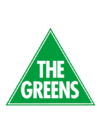New South Wales state election, 2011
|
|
|||||||||||||||||||||||||||||||||||||||||||||||||||||||||||||||
|
|||||||||||||||||||||||||||||||||||||||||||||||||||||||||||||||
|
|||||||||||||||||||||||||||||||||||||||||||||||||||||||||||||||
|
|
|||||||||||||||||||||||||||||||||||||||||||||||||||||||||||||||
|
|||||||||||||||||||||||||||||||||||||||||||||||||||||||||||||||
Barry O'Farrell
Liberal/National coalition
Elections to the 55th Parliament of New South Wales were held on Saturday, 26 March 2011. The 16-year-incumbent Australian Labor Party government led by Premier Kristina Keneally was defeated in a landslide by the Liberal–National Coalition opposition led by Barry O'Farrell. Labor suffered a two-party swing of 16.4 points, the largest against a sitting government at any level in Australia since World War II. From 48 seats at dissolution, Labor was knocked down to 20 seats—the worst defeat of a sitting government in New South Wales history, and one of the worst of a state government in Australia since federation. The Coalition picked up 34 seats to win a strong majority, with 69 seats. It is only the third time since 1941 that a NSW Labor government has been defeated.
New South Wales has compulsory voting, with an optional preferential ballot in single-member seats for the lower house and single transferable vote with optional preferential above-the-line voting in the proportionally represented upper house. The election was conducted by the New South Wales Electoral Commission (NSWEC).
...
Wikipedia




